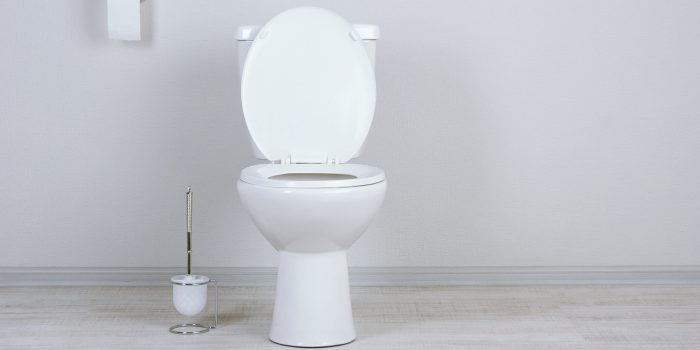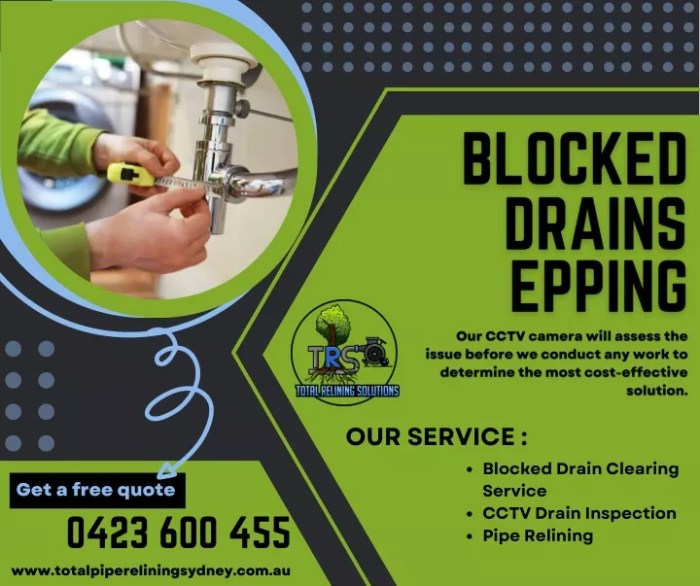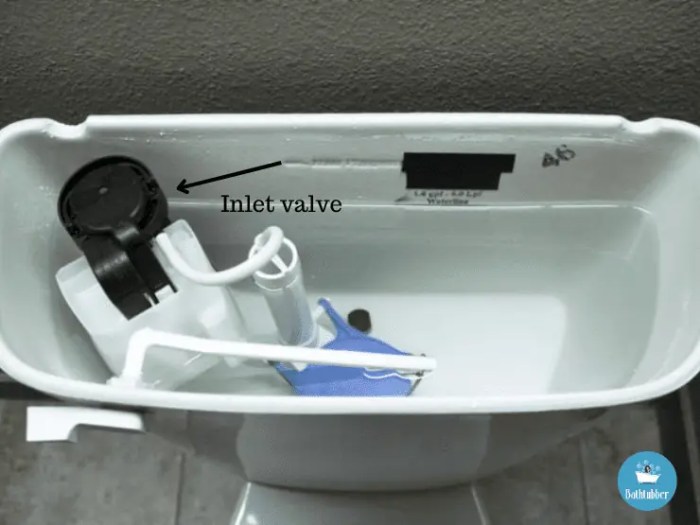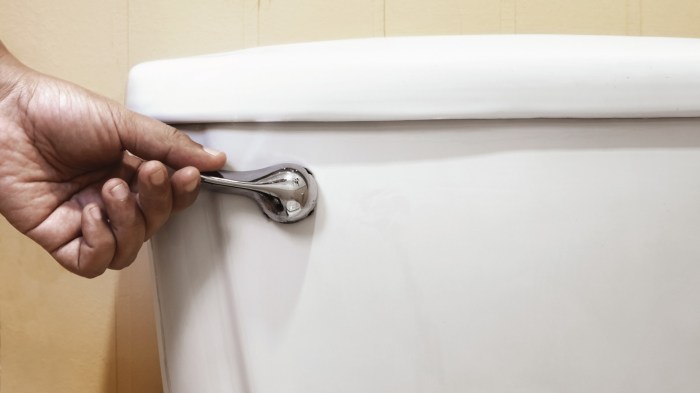Toilet Clogged Water High A Guide
Toilet clogged water high? This comprehensive guide dives into the causes, solutions, and prevention strategies for this common plumbing issue. From understanding the rising water levels and potential hazards to various troubleshooting methods and preventive measures, we’ll equip you with the knowledge to handle this problem effectively. We’ll explore different clog types, discuss safe unclogging techniques, and highlight when professional help is necessary.
High water levels in your toilet aren’t just inconvenient; they can signal more serious plumbing problems. This guide covers everything from simple plunger use to more advanced techniques, including the use of plumbing snakes and alternative solutions. We also address the potential risks of chemical drain cleaners and the proper disposal methods. Furthermore, preventive measures, like regular maintenance and proper flushing habits, will help you avoid future clogs.
Understanding the Issue
A toilet clogged with high water levels, often referred to as a “toilet clogged water high,” presents a common plumbing issue. This typically indicates a blockage within the toilet’s drain system, preventing proper water flow. Understanding the causes and troubleshooting steps is crucial for a swift and effective resolution.
High water levels in a toilet can stem from various factors, ranging from simple blockages to more complex issues. Identifying the root cause is the first step in resolving the problem.
Causes of Toilet Clogs with High Water
Toilet clogs with high water levels are frequently caused by improper disposal of materials, like excessive amounts of toilet paper, feminine hygiene products, or other non-flushable items. Foreign objects, such as toys, small appliances, or other unwanted items, can also accumulate in the pipes and cause blockages. Furthermore, gradual build-ups of debris, including hair, soap scum, and mineral deposits, can eventually lead to a blockage. Finally, structural issues, like a damaged or incorrectly installed drainpipe, can cause water to accumulate in the toilet bowl.
Common Household Items Causing Blockages
A variety of household items can contribute to toilet blockages. Excessive amounts of toilet paper, rather than being flushed, can accumulate and create a significant blockage. Similarly, feminine hygiene products, such as tampons and sanitary napkins, are often non-flushable and can cause a clog. Other non-flushable items, such as toys, small appliances, or other unwanted items, can also find their way into the pipes and cause a problem. Furthermore, gradual build-ups of hair, soap scum, and mineral deposits can eventually lead to a blockage.
Types of Toilet Clogs
Toilet clogs can be broadly categorized into two types: partial and complete blockages. A partial blockage allows some water to drain, but the flow is impeded, leading to a slow drain or a high water level in the bowl. A complete blockage completely stops the water from draining, causing the water level to rise significantly and eventually overflow.
Significance of Water Level Rising in a Toilet
A rising water level in a toilet signifies a blockage in the drainage system. The accumulation of water indicates that the water cannot flow through the drainpipe as intended. This warrants immediate attention to prevent potential overflow and damage.
Potential Dangers Associated with High Water Levels in a Toilet
High water levels in a toilet can lead to a number of dangers. The most obvious is the risk of overflow, which can lead to water damage to the surrounding areas. Overflowing water can also create a breeding ground for bacteria and mold, posing health risks.
Identifying a Toilet Clog with High Water: A Flow Chart
- Check the water level in the toilet bowl. Is the water level unusually high? If yes, proceed to the next step.
- Inspect the toilet bowl for any visible obstructions. Are there any foreign objects, excessive amounts of paper, or other items obstructing the drain?
- If obstructions are present, attempt to remove them carefully. If obstructions are not easily removable, proceed to the next step.
- If obstructions are not present or removal does not resolve the issue, consider contacting a plumber.
Troubleshooting Steps for a High Water Toilet
- Firstly, assess the situation by checking the water level. Is it significantly high? If yes, proceed with the troubleshooting steps.
- Carefully examine the toilet bowl and the surrounding area for any foreign objects or debris. Remove any visible obstructions.
- If the blockage persists, try using a plunger. Ensure the plunger is properly positioned and use firm, steady strokes to dislodge the blockage.
- If the plunger is ineffective, consider using a drain snake or a plumbing auger. These tools are designed to reach deep into the drainpipe to remove blockages.
- If these methods fail, it’s essential to contact a professional plumber for further assistance. Professional plumbers possess the expertise and tools to address complex plumbing issues effectively.
Troubleshooting Methods: Toilet Clogged Water High
Addressing a high water level in a toilet often indicates a clog. Effective troubleshooting requires a systematic approach, starting with simple methods and escalating to more involved techniques as needed. A clear understanding of the potential causes and the appropriate tools will ensure a successful resolution.
Using a Plunger
A plunger is a common and often effective tool for dealing with toilet clogs. Its effectiveness relies on creating a seal around the rim of the toilet bowl and then applying a forceful, rhythmic pumping action.
- Ensure the water level is low enough to allow for a proper seal. If the water is too high, drain some of it until it reaches the appropriate level.
- Position the plunger over the drain opening, ensuring a complete seal. A proper seal is crucial for creating the necessary pressure.
- Pump the plunger up and down with firm strokes, maintaining a consistent rhythm. The aim is to create a vacuum that disrupts the clog.
- If the first attempts are unsuccessful, repeat the process several times. Sometimes, several cycles of pumping are needed to dislodge the clog.
- If the clog persists, move to more advanced methods.
Employing a Plumbing Snake
A plumbing snake, also known as a drain auger, is a flexible cable with a tip designed to reach and clear blockages deep within the drain line. This method is more effective for clogs located further down the drain pipe.
- Inspect the toilet for any visible obstructions. If you find something, you may be able to remove it directly.
- Insert the snake into the drain opening, slowly pushing it until it encounters the blockage.
- Rotate the handle of the snake to agitate and break up the clog.
- Once the clog is broken up, carefully pull the snake out of the drain.
- Check for any remaining obstructions.
Alternative Methods for Stubborn Clogs
In cases where plungers and snakes prove ineffective, other methods can be considered. These are generally used as a last resort and may not always be successful.
- Using a bucket of water: Carefully pour a large amount of hot water down the toilet bowl. This method may help to dislodge small clogs, but it may not be suitable for extensive blockages.
- Using a drain cleaner: Chemical drain cleaners can effectively dissolve clogs, but they can also be harmful to plumbing fixtures and potentially dangerous if not used correctly.
Comparison of Unclogging Methods
The following table provides a comparative analysis of different methods, highlighting their effectiveness, safety concerns, and necessary tools.
| Method | Effectiveness | Safety Concerns | Tools Needed |
|---|---|---|---|
| Plunger | Moderate | Low | Plunger |
| Plumbing Snake | High | Moderate | Plumbing Snake, protective gloves |
| Chemical Drain Cleaners | High | High | Chemical Drain Cleaner |
Risks of Using Harsh Chemicals
Chemical drain cleaners, while effective, pose significant risks if not handled with extreme care. These products contain corrosive chemicals that can damage pipes, septic systems, and even cause serious health hazards if ingested or inhaled. Always follow the manufacturer’s instructions carefully and wear appropriate protective gear.
Proper Disposal of Drain Cleaning Chemicals
Proper disposal of drain cleaning chemicals is crucial to prevent environmental damage. Never pour these chemicals down the drain or into the sewer system. Always follow the instructions on the product label for safe disposal procedures. These procedures often involve disposing of the chemicals at a designated hazardous waste collection point.
Preventive Measures
Toilet clogs are a common plumbing issue, often preventable with proactive measures. Understanding the causes and implementing regular maintenance routines significantly reduce the risk of future problems. By following these preventive steps, you can ensure a smooth-running plumbing system and avoid costly repairs.
Proper preventative measures are crucial for maintaining a functioning toilet. Neglecting these steps can lead to frequent clogs, causing inconvenience and potentially expensive repairs. Proactive maintenance is a more economical and efficient solution than addressing clogs after they occur.
Common Causes of Toilet Clogs
Toilet clogs are often caused by a buildup of various materials within the plumbing system. These materials can include: paper products that aren’t fully biodegradable, excessive amounts of toilet paper, and food waste. Furthermore, the inappropriate disposal of certain items like feminine hygiene products, cotton swabs, and other non-flushable items can contribute to clogs. The quantity of material flushed plays a significant role in the severity of a potential clog.
Importance of Regular Toilet Maintenance
Regular toilet maintenance is essential for preventing clogs. A proactive approach can identify potential issues before they escalate into major problems. This proactive approach can save time, effort, and money by preventing expensive repairs or emergency plumbing calls.
Preventative Steps to Avoid Future Clogs
Implementing preventative steps can greatly reduce the frequency of toilet clogs. A crucial aspect of this prevention is the responsible disposal of materials. By carefully considering what is flushed, and how much, homeowners can minimize the risk of clogs.
- Avoid flushing non-flushable items, including feminine hygiene products, wipes, cotton swabs, and certain types of disposable cleaning materials. These items can accumulate and obstruct the plumbing system.
- Dispose of toilet paper sparingly, considering the amount flushed at a time. Excessive amounts of toilet paper can cause clogs. Flushing excessive amounts of paper can overload the toilet system.
- Be mindful of food waste. Avoid flushing food particles, grease, or other food-related debris down the toilet. Food waste can solidify and cause blockages within the pipes.
- Regularly inspect the toilet for any potential blockages or debris buildup. Early detection and removal of these materials can prevent more significant problems.
Toilet Inspection Checklist
A regular toilet inspection checklist can streamline the maintenance process.
- Visual inspection for any visible blockages or debris buildup around the rim, trapway, or base of the toilet.
- Check the water level in the tank and bowl. Ensure the water level is appropriate and not unusually high or low.
- Inspect the flush mechanism for any unusual sounds or signs of malfunction.
- Check for any foreign objects or items that might be lodged within the toilet or drain.
Proper Flushing Habits
Proper flushing habits are critical for maintaining a functional toilet. The method of flushing directly impacts the effectiveness of the system and reduces the likelihood of clogs.
- Flush only the appropriate amount of toilet paper and other flushable items. Avoid overloading the toilet system.
- Avoid flushing items that are not designed for flushing. Be mindful of what is placed into the toilet.
- Use the appropriate flushing technique for the toilet model. This is especially important for dual-flush toilets.
Impact of Foreign Objects
The introduction of foreign objects into the toilet system can lead to significant problems. These items can cause blockages, requiring expensive repairs or plumbing emergencies.
- Foreign objects can obstruct the flow of water, causing clogs and potential damage to the toilet or plumbing system.
- These objects can cause damage to the plumbing system or the toilet itself.
- The disposal of foreign objects can contribute to significant and potentially costly plumbing problems.
Identifying and Removing Potentially Clogging Objects
Identifying and removing potentially clogging objects from the toilet is crucial. Prompt action prevents further issues and costly repairs.
- Regularly inspect the toilet for any foreign objects.
- Use appropriate tools to remove the object safely and efficiently. This may involve using tongs or other tools designed for plumbing work.
- If the object is lodged deeply or inaccessible, contact a professional plumber for assistance.
Toilet Types and Susceptibility to Clogs
Different toilet types vary in their susceptibility to clogs. Understanding these differences can inform preventative measures.
| Toilet Type | Susceptibility to Clogs | Reasons |
|---|---|---|
| Standard Toilet | Moderate | Material and Design |
| Low-Flow Toilet | Low | Reduced Water Consumption |
| Dual-Flush Toilet | Low | Options for Different Needs |
When to Call a Professional

Source: thishomemadelife.com
Knowing when to seek professional plumbing assistance is crucial for preventing further damage and ensuring a safe and efficient resolution to toilet clogs with high water levels. Ignoring warning signs can lead to more extensive and costly repairs down the line. Understanding the limitations of DIY fixes and the expertise of licensed plumbers is key to making informed decisions.
Situations Requiring Professional Plumber Intervention
A professional plumber is necessary when DIY troubleshooting fails to resolve the issue or when the problem presents potential safety hazards. This includes situations where the clog persists despite repeated attempts, or when the high water level persists, indicating a more serious underlying problem. Identifying potential complications is critical to avoiding further damage.
Signs of Serious Plumbing Issues
Several signs indicate the need for immediate professional intervention. These include persistent high water levels, unusual noises from the pipes, foul odors emanating from the drain, and signs of water damage in the surrounding areas. The presence of these indicators suggests a more significant plumbing problem that may necessitate specialized tools or techniques. For instance, persistent gurgling sounds could signify a blockage in the sewer line, which might require specialized equipment for unclogging.
Potential Complications of DIY Repairs
Attempting DIY repairs for a toilet clog with high water levels can lead to several complications. These include causing further damage to the plumbing system, spreading contamination, or introducing hazardous materials. For example, forceful plungers or chemicals could worsen the blockage, requiring a more extensive and expensive repair.
Comparison of DIY and Professional Costs
While DIY repairs might seem cost-effective initially, the cost of professional intervention often proves more economical in the long run. Potential hidden costs associated with DIY repairs, such as further damage, the need for replacements, or even health risks, can quickly outweigh the initial savings. For instance, a seemingly simple clog might hide a more extensive pipe blockage, resulting in a larger bill than a plumber would charge to fix it immediately.
Importance of Hiring a Licensed Plumber
Hiring a licensed plumber is essential for ensuring the safety and efficacy of the repair. Licensed plumbers are trained and equipped to handle various plumbing issues, including those with high water levels. They are also bound by regulations and codes, ensuring compliance with safety standards. Moreover, licensed plumbers are held accountable for their work, offering warranties and guarantees on their services.
Steps for Contacting a Plumber
Contacting a plumber involves gathering essential information about the issue. This includes details about the clog, the water level, and any noticeable symptoms. It’s advisable to inquire about their experience with similar issues and obtain an estimate before committing to a service. Thorough communication with the plumber is essential for a swift and effective resolution.
Table of Common Plumbing Emergencies
| Emergency | Description | Action |
|---|---|---|
| Toilet Overflow | Water overflowing from the toilet | Call a plumber |
| Pipe Burst | Water leaking from a pipe | Call a plumber |
| Sewer Line Clog | Blockage in the sewer line | Call a plumber |
| Water Heater Malfunction | Malfunctioning water heater | Call a plumber |
| Clogged Drain | Clogged drain in sink, tub, or shower | Call a plumber (if severe or persistent) |
Illustrative Examples
Understanding the causes and remedies for a clogged toilet with high water involves examining specific scenarios. Analyzing these examples allows for a deeper comprehension of the problem-solving process. Different types of clogs necessitate unique approaches, and understanding the nature of the blockage is crucial.
Toilet Clog with High Water: A Common Scenario, Toilet clogged water high
A common scenario involves a toilet that slowly fills with water, rising above the rim. The water level doesn’t recede, even after flushing. This persistent water accumulation signifies a blockage in the toilet’s drain system. The toilet may make a gurgling or bubbling sound as the water attempts to escape. Potential causes for this scenario include a partially or completely blocked drain pipe, a buildup of toilet paper, or other non-flushable items.
Correct Procedure for Addressing the High Water Clog
The initial step is to assess the situation. Inspect the toilet for any visible obstructions in the bowl or the surrounding area. If no obvious obstructions are present, proceed to the next step. Use a plunger to dislodge the blockage, ensuring a good seal around the plunger cup. Repeated plunges might be necessary. If the plunger proves ineffective, a drain snake or auger can be used to reach and remove the blockage from deeper within the drainpipe. Finally, verify that the clog is removed, and the water level returns to normal.
Clogged Toilet with Unusual Debris: A Unique Challenge
Sometimes, clogs involve unusual or unexpected debris, such as toys, sanitary napkins, or other items not typically flushed. This presents unique challenges, as the nature of the blockage dictates the removal procedure. For example, a tangled mass of toys in the drainpipe would require a more involved approach.
Identifying and Removing the Unusual Debris
Identifying the specific debris is crucial. If possible, try to locate the source of the clog and determine the type of debris. Using a drain snake or auger is often necessary to dislodge the blockage. If the debris is relatively large or bulky, careful extraction with tools might be required. Specialized tools or techniques might be necessary depending on the type of debris and its location within the drainpipe.
Real-Life Story: A Successful Resolution
A homeowner noticed their toilet overflowing with water. After trying the plunger and drain snake, they discovered a clump of tangled plastic toys lodged in the drainpipe. They cautiously used a specialized tool designed for removing large items from drainpipes. The removal of the toys resolved the issue, and the toilet functioned normally afterward. This case demonstrates that identifying and removing unusual debris is essential for effective clog removal.
Ending Remarks

Source: ftcdn.net
In conclusion, a high water level in your toilet can stem from various factors, ranging from simple clogs to more complex plumbing issues. This guide provided a detailed overview of the problem, offering practical troubleshooting steps, and emphasizing preventative measures. We discussed various methods for unclogging a toilet, from simple plungers to plumbing snakes, and examined the potential risks and benefits of each approach. Ultimately, knowing when to call a professional is just as crucial as understanding how to tackle a minor clog. By understanding the causes, implementing preventative measures, and recognizing when professional help is needed, you can effectively manage and avoid this common plumbing frustration.





